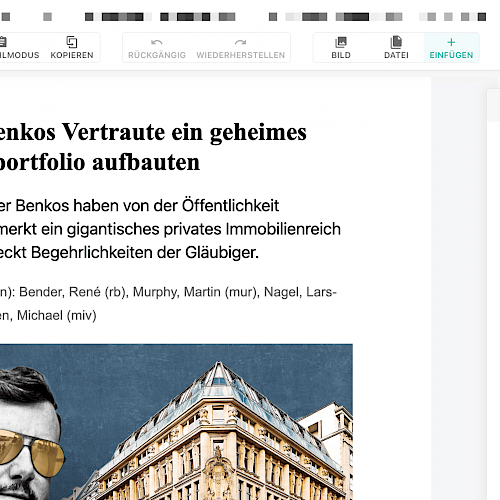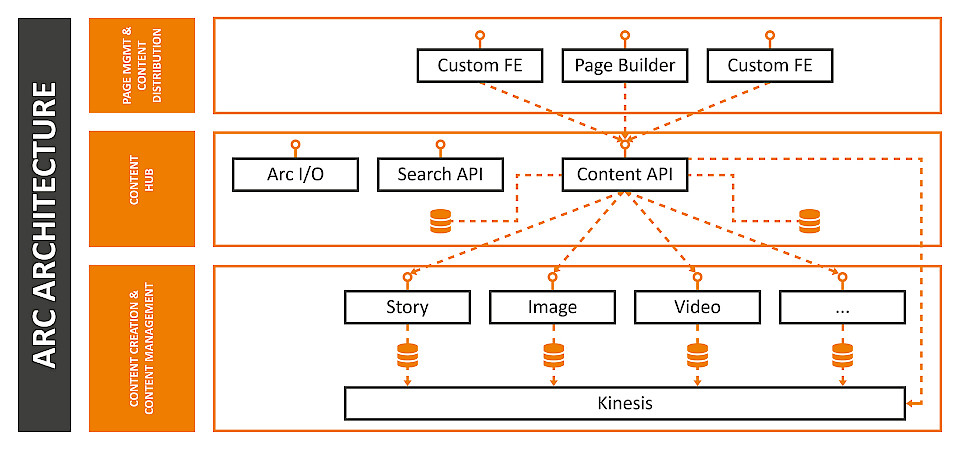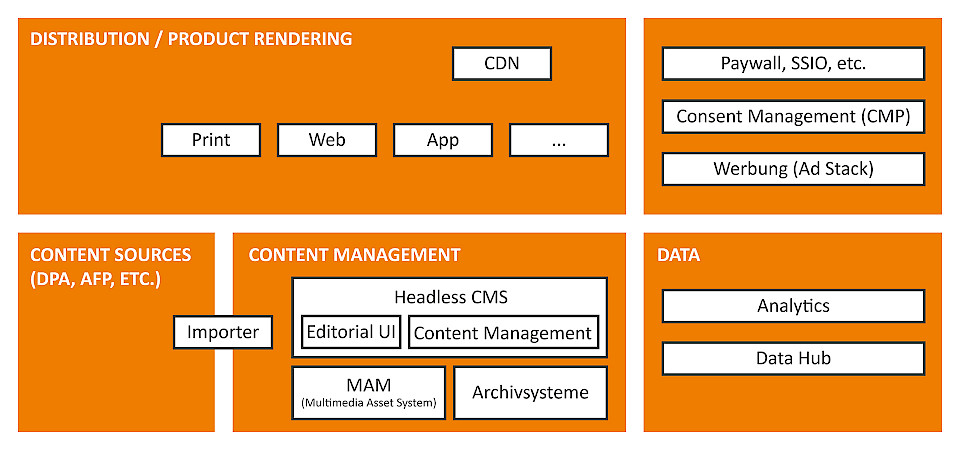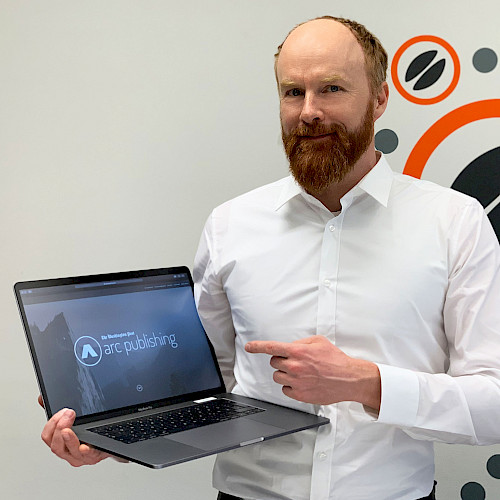
CMS Introduction with LivingDocs at Handelsblatt Media Group
 Open navigation
Open navigation 
The media industry is changing – digital offerings and digital content management have long been established among publishers, but the demands are constantly changing. For quick and agile operations in the long term, they need the right technical setup, ideally tailored precisely to their respective needs. Content production, management and distribution has been and remains the central challenge for media companies and especially for publishers.
jambit has been accompanying the development of content management and publishing systems for clients for almost 15 years now. During this time, the systems and their requirements have changed tremendously. And surprisingly, the overall experiences are similar developments everywhere. On this page, you can learn why the classic enterprise CMS is not a sustainable solution for publishers and about possible alternatives.
For their journey into the digital world, publishers initially established a classic enterprise CMS as the core of their online publishing infrastructure. They were integrated into the system landscape as extensions of the central print systems. In terms of content production, management, site management, distribution, etc., these systems took an all-inclusive approach. In retrospect, they turned out to be large monolithic systems designed to maintain websites and to be operated on-premise.
Most importantly, they were not prepared for two critical developments. First, the architectures of these systems were not designed for the cloud. Even after a successful migration to the cloud, it is impossible to take full advantage of a state-of-the-art operating concept. This becomes clear, for example, in the fact that they are not horizontally scalable. Without the possibility of auto-scaling, it is not possible to react dynamically to changes in load. Classic infrastructures can then only be dimensioned very large according to the load peaks, which causes permanently high operating costs.
On the other hand, the market showed a strong fragmentation of distribution in terms of channels, target groups and product development. Web, app, social media, special or cross-divisional titles, pay products, and many more had to be made possible. To achieve this, one of the great strengths of classic content management systems, namely the unlimited possibility of customization, was exploited. The systems were put in a position to adapt more or less well to changes in the market. At the end of this development, there are now highly complex, monolithic systems, as part of an equally complex system landscape. These not only cause disproportionately high costs in terms of maintenance and further development, but also tie up valuable resources, harbor high operating risks and are, despite everything, not positioned for the future. The efforts of publishers to optimize their subscription business are currently bringing these system weaknesses to light.
For most media companies, these monolithic publishing systems are still the standard today. As a result, they have to deal with technical legacy issues while at the same time dealing with central issues of their actual core business:
Most media companies are facing the situation where the problems described and the challenges of the future are no longer manageable with the current setup. The time of the classic monoliths is over. We are in the middle of the next evolutionary stage for publishing systems, which is creating completely new technical approaches. Just as past developments were similar at many media companies, they are currently pursuing very similar ideas for the future. Many have identified that no system on the market meets all their needs, while systems like Arc Publishing have inspired a new approach.

The central idea behind the new system designs: Building a publishing platform from individual, loosely coupled applications with clear responsibilities in content production, management and distribution.
CMS still plays a role in new system architectures, but no longer a dominating one. Headless CMS, i.e., the separation of content production and management from content delivery, have long dominated the market and are integrated in the architecture with applications for other components of the value chain (such as image and video management, user management or paywall).

Goal of the new system designs is to provide future-proof, modular and multi-tenant platforms as needed. This approach offers many advantages:
There are two basic strategies among various market players. One focuses on best-of-breed, i.e. the integration of the most suitable applications available on the market for specific tasks such as editor, image management or page management. The central advantage of this approach is that development efforts are limited to architecture and product integration. Also, components that prove to be unsuitable or that at some point are no longer up to date can be replaced with relatively little effort. Working with (product) partners, this approach avoids overdependence on individual partners. Clients can keep the overall solution under control.
Others are developing all or most of the components of their landscape completely on their own. The question of "make or buy?" is one that each company must answer for itself. Not every media company is equipped to handle these high development costs. The core competence of a publisher is not software development. And if, for strategic reasons, software development is to become one of your media company's core competencies in the future, then the challenges of planning and personnel acquisition must be mastered.
The visions of some media companies go further than just solving their own challenges. They create infrastructure, platforms, products and applications for the market and become product developers themselves. This is another way to generate new sources of revenue by offering infrastructure, tools and services combined with their content for the market. If they then integrate these platforms with offerings that suit their target group, be it e-commerce offerings or niche and special offerings, they can succeed in building an ecosystem with which they can survive in the long term.
The future of publishing is completely open. Will publishers manage to maintain their position, completely reposition themselves, or will they end up losing the battle against the big platforms to reach end customers?
jambit can help you to secure your entrepreneurial success in the long term. With more than 15 years of experience in software development for publishers, we have helped shape the development and will continue to do so in the future. We know the trends and our employees have the technical expertise to understand your questions and challenges and develop suitable solutions. And we know that these solutions look completely different for large publishing houses than for small or medium-sized .

We combine our experiences and professional expertise with the technical know-how to serve all aspects of the domain. From infrastructure, cloud and DevOps to content management systems, databases and back-end development to front-end development on the web or native apps. Last but not least, our specialists are happy to advise you on data and AI topics. Even if you want to orientate yourself first, we can already advise you in the analysis of the problems and potential requirements. jambit is a reliable partner at your side and committed to the long-term success of your company.

Contact us now